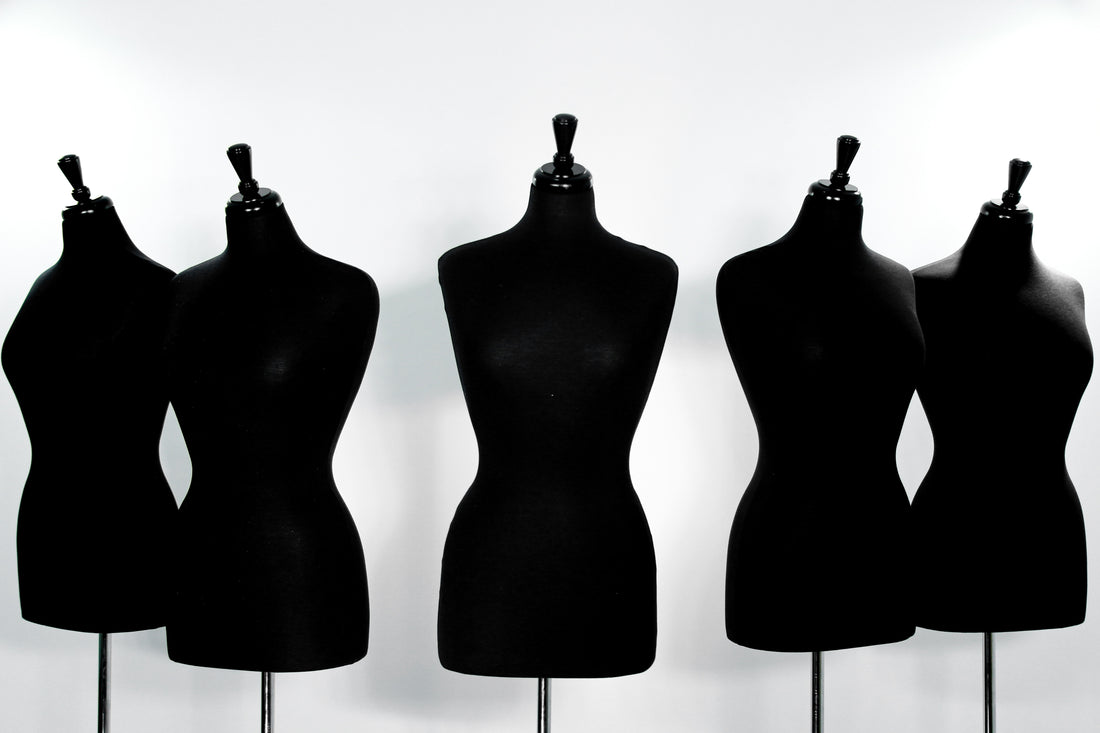While sizing seems to be not so “standard” today, it is important we educate ourselves on these industry standards so we can navigate the water more clearly. We can use this knowledge to empower others and spread advocacy for size inclusion. What you will learn should shed some light on an outdated system which makes finding clothing for our body, difficult. I hope you can take away the knowledge that like many of the societal systems, this one is also flawed. In other words, it’s not you, it’s them! This is a great article to send to friends and family who may not understand the injustice of the fat community and the lack of access folks in larger bodies face.
In the diverse landscape of fashion, sizing plays a crucial role in determining accessibility and inclusivity for consumers. This post aims to shed light on the differences between straight sizing, extended sizing, and plus sizing, and address the gap between what's needed and what’s offered.

Straight Sizing:
- Refers to standard sizing that typically ranges from 0 to 12 (or XS to XL).
- Historically, the majority of clothing brands have focused on straight sizing.
- Limited size range, excluding many individuals whose bodies fall outside this spectrum.
- That said, sizing itself varies and one brands “XL” may fit like another’s “L” or vice versa.
Extended Sizing:
- A response to the demand for more inclusive options and often added on top of an existing size range and therefore based off the fit of the straight sizing. This often is the reason for XXL fitting poorly.
- Includes sizes beyond the straight size range, often designated as "extended" or "inclusive" sizing. Rarely is this actually truly inclusive. Often seen written “XXL” or “XXXL.”
- Offers more choices but does not cover the full spectrum of body types.
Plus Sizing:
- Specifically caters to individuals whose measurements fall beyond straight sizing.
- Traditionally, plus sizes start at 12/14 or 0X/1X and go up.
- Plus sizing fit is also based on it’s own unique plus fit or form, rather than taking a straight-sample size and grading it up, the way Extended Sizing does.
- Despite the growing percentage of plus-size people, there's still a notable disparity in available options.
The Reality of Sizing Disparities:
- Statistically, 68% of American women are considered plus size. Unfortunately we don’t have the data across all genders but the likely-hood of the numbers looking similar is high.
- However, the fashion industry has been slow to adapt, with many brands predominantly offering straight sizing only.
This means that only 32% of American women can successfully shop for clothing with readily available sizing.
Plus size shoppers are facing challenges with a limited variety and style options compared to straight-sized counterparts. This group is unequally represented in fashion campaigns and media. Plus-size clothing is frequently sold at a higher price, often referred to as the "fat tax."
The Call for Inclusivity:
- We need more advocacy for diverse body representation in the fashion industry.
- There is an increased demand for more brands to embrace inclusivity by expanding their size ranges to include full plus size options.
- Many people are advocating for the dismantle of these sized categories all together in replacement for one range that accommodates everyone.
In conclusion, the fashion industry is gradually acknowledging the need for inclusivity, but there's still a lot of work to be done. Understanding the differences between straight sizing, extended sizing, and plus sizing is essential in promoting a more equitable and diverse fashion landscape. As consumers, our collective voice can drive positive change and encourage brands to cater to the diverse beauty of


